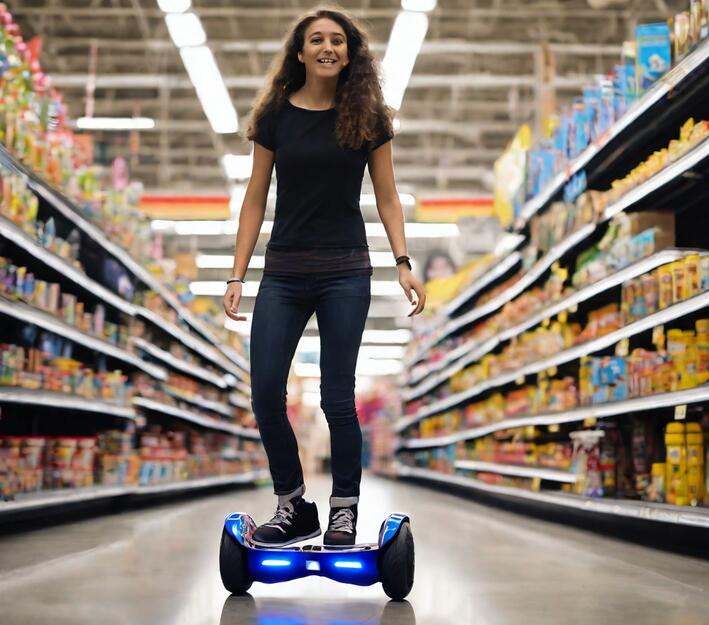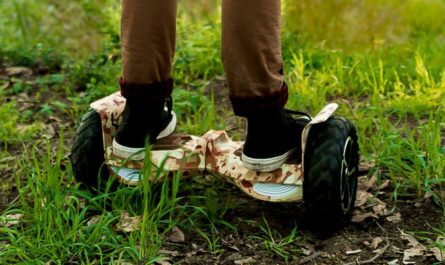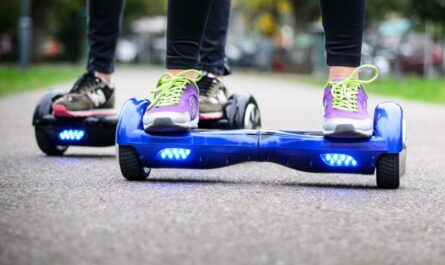Hoverboards have become a popular mode of transportation for many individuals, offering a fun and convenient way to get around. However, when it comes to using hoverboards in public spaces like Walmart, there are certain considerations to keep in mind. In this article, we will explore Walmart’s policy on hoverboard usage, safety concerns, alternative options for in-store navigation, and the legality of riding hoverboards in public spaces.
Table of Contents
Why Would You Want to Ride a Hoverboard in Walmart?
Hoverboards have gained popularity as a means of personal transportation, and some individuals may consider using them while shopping at Walmart.
The idea of effortlessly gliding through the aisles and quickly maneuvering between departments can be appealing to many. However, before you decide to ride a hoverboard in Walmart, it’s important to understand the store’s policy on mobility devices.
Walmart’s Policy on Mobility Devices
Walmart has a policy in place regarding the use of mobility devices within their stores. These mobility devices include wheelchairs, scooters, and other similar devices.
However, the policy may vary depending on the specific location. It is essential to familiarize yourself with Walmart’s policy at your local store to determine whether hoverboards are allowed.
If you are unsure about the policy, it is best to reach out to the store’s management or speak to an employee who can provide you with the most accurate information.
Keep in mind that Walmart’s primary concern is the safety and well-being of its customers, so its policy is designed to ensure a secure shopping experience for everyone.
Safety Considerations When Riding Hoverboards
While riding a hoverboard in Walmart may seem exciting, it is crucial to consider the potential safety risks, particularly in crowded spaces. Hoverboards can reach high speeds, and navigating through a busy store can pose a challenge, both for the rider and other shoppers. Walmart strongly emphasizes customer safety and strives to create a safe environment for everyone.
According to the Consumer Product Safety Commission (CPSC), hoverboard accidents have resulted in injuries. These accidents highlight the importance of careful and responsible hoverboard use. Before deciding to ride a hoverboard in Walmart, it is essential to weigh the potential risks and take into account the concerns for safety.
The Legality of Hoverboards in Public Spaces
The legality of riding hoverboards in public spaces, including Walmart, may vary depending on local laws and regulations. It is essential to research and understand the specific laws in your area regarding the use of hoverboards in public spaces.
While there may not be any legal restrictions specific to Walmart, it is crucial to adhere to local regulations to avoid any legal consequences.
Alternative Ways to Navigate Walmart Stores
If hoverboards are not permitted or if you are concerned about the potential risks and safety issues associated with riding a hoverboard in Walmart, there are alternative options available for in-store mobility. Walmart provides various options, such as motorized shopping carts or manual wheelchairs, to accommodate individuals with mobility needs.
Opting for alternative methods of transportation within Walmart ensures that you can navigate the store safely and effectively, without posing a risk to yourself or other shoppers. These options are designed to provide a seamless shopping experience for individuals with different mobility requirements.
Public Perception and Courtesy
Aside from the practical considerations, it is also important to be mindful of how other shoppers may perceive the use of hoverboards in Walmart. Some individuals may view hoverboards as a potential nuisance or a safety hazard in a crowded retail environment. It is crucial to be considerate of others and prioritize their shopping experience.
Being courteous and respectful to fellow shoppers can help maintain a positive atmosphere within the store. If you do choose to ride a hoverboard in Walmart, always be aware of your surroundings, yield to pedestrians, and avoid speeding or engaging in any risky behavior.
Hoverboard Etiquette in Stores
To ensure a safe and enjoyable experience for yourself and others when riding a hoverboard in any store, including Walmart, it is essential to follow proper hoverboard etiquette. Here are some do’s and don’ts to keep in mind:
Do’s:
- Ride at a reasonable speed
- Yield to pedestrians and give them the right of way
- Be aware of your surroundings and avoid sudden movements
- Follow any designated pathways or guidelines provided by the store
Don’ts:
- Ride recklessly or perform stunts
- Block or impede other shoppers’ paths
- Ride in restricted areas or where hoverboards are not permitted
- Disturb the shopping experience of others
Adhering to these guidelines ensures a harmonious shopping environment and helps to minimize any potential risks or disturbances.
How to Approach Walmart for Hoverboard Use
If you are determined to ride a hoverboard in Walmart, it is essential to approach the subject properly with the store’s management. Respectfully communicate your request and inquire about their policy on hoverboard usage. Here are some tips to help you approach Walmart for permission:
- Research Walmart’s policy on mobility devices and hoverboard usage beforehand.
- Speak to a store manager or supervisor who can provide accurate information.
- Clearly explain your intention and assure them that you will prioritize safety and abide by their guidelines.
- Be prepared for the possibility of being denied permission, as the store’s policy may prohibit hoverboard use.
Remember, Walmart’s policy is in place to ensure the safety and well-being of all customers, so it is important to respect their decision.
Hoverboard-Friendly Shopping Venues
If riding a hoverboard in Walmart is not permitted or if you choose not to pursue it due to safety concerns, there may be other shopping venues that are more open to hoverboard use. It is worth researching and exploring alternative locations that are known to accommodate hoverboard riders.
These venues may have established rules and regulations regarding hoverboard usage, allowing you to enjoy your shopping experience while using your hoverboard responsibly.
What Hoverboard Brands Say About Indoor Usage
Hoverboard manufacturers often provide guidelines and recommendations for using their products in various settings.
While individual brands may not specifically address hoverboard usage in stores like Walmart, they generally emphasize responsible and safe riding practices.
It is always a good idea to consult the user manual or reach out to the manufacturer for any specific guidance regarding indoor usage.
Personal Experiences and Anecdotes
Some individuals have shared their experiences of riding hoverboards in Walmart or similar stores. While these anecdotes can provide insights into what others have encountered, it is important to remember that each store and situation may differ.
Personal experiences can offer valuable perspectives but should not be considered universal guidelines or permissions.
FAQ
Are hoverboards allowed in all Walmart locations?
Hoverboard policies may vary depending on individual Walmart locations. It is best to research and inquire about the specific policy at your local Walmart store.
Can children ride hoverboards in Walmart?
Hoverboard usage policies for children may also vary by location. Check with your local Walmart store for any age restrictions or guidelines regarding hoverboard usage.
What are the consequences of using a hoverboard in Walmart against policy?
Consequences for using a hoverboard in Walmart against their policy may range from a verbal warning to potential removal from the premises. It is important to respect their policy and prioritize the safety and experience of all shoppers.
Conclusion
In conclusion, the question of whether you can ride a hoverboard in Walmart depends on the store’s policy and local laws and regulations.
While hoverboards offer a fun and convenient mode of transportation, it is crucial to prioritize safety and consider the well-being of other shoppers. Walmart’s dedication to customer safety and its policies regarding mobility devices should be respected.
If hoverboard use is not permitted, there are alternative options available to ensure a smooth shopping experience. Always be courteous and mindful of others when deciding to ride a hoverboard in any public space.
Have you ever tried riding a hoverboard in a store like Walmart? Share your experiences and thoughts in the comments below!










